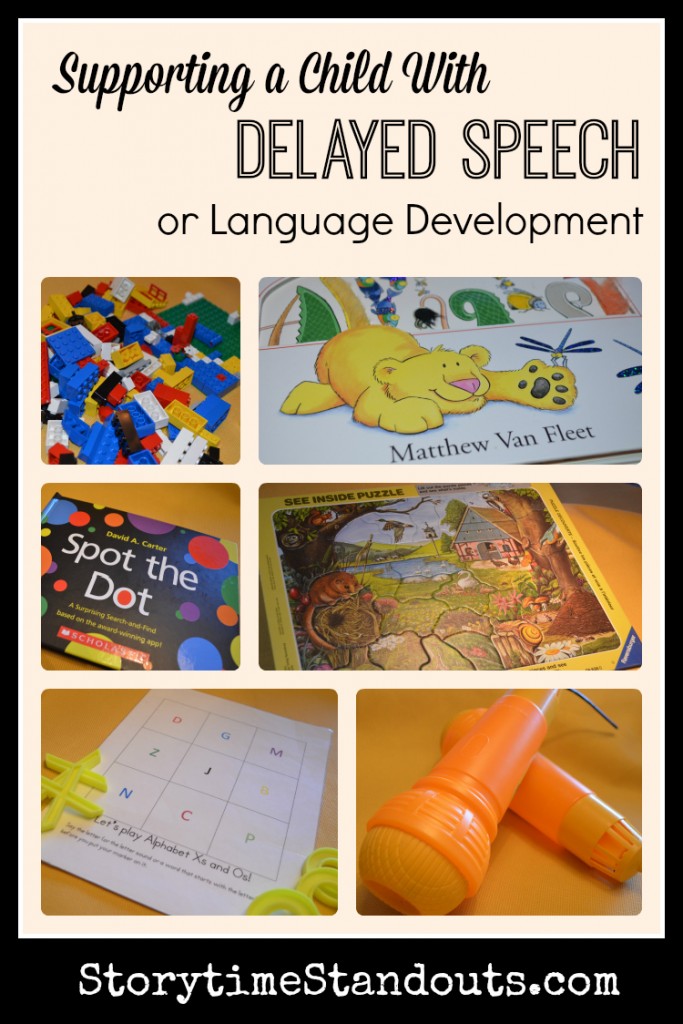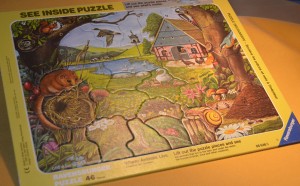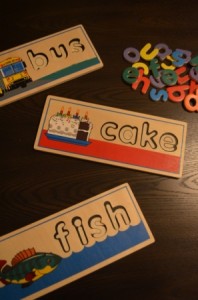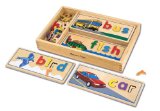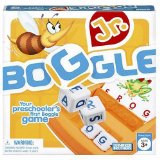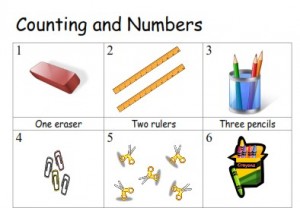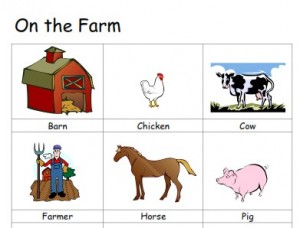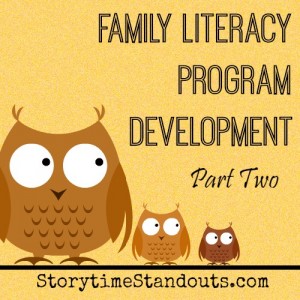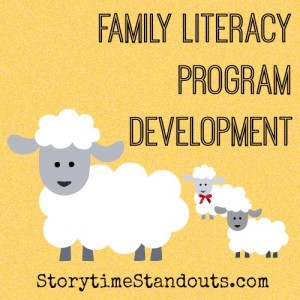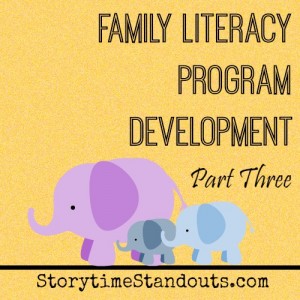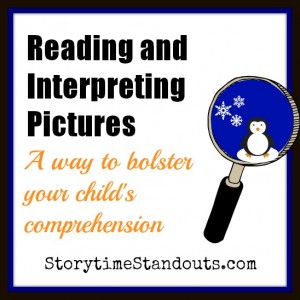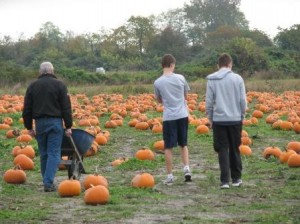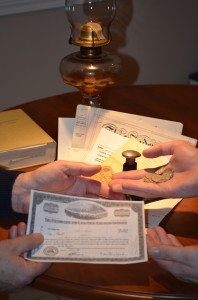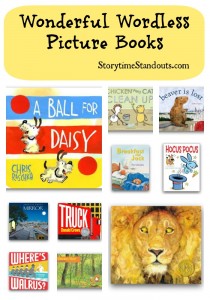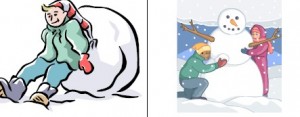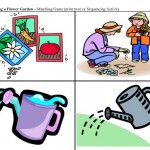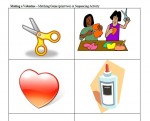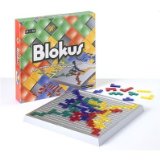My experiences working with a child with delayed speech
Since September 2013, I have been working twice a week with a four year old boy who has delayed speech. He lives in a bilingual household and he has one older sibling – a girl who also had delayed speech. It has been enormously rewarding to help this child find his voice. He is unfailingly happy and is always excited to welcome me and my “bag of tricks” into his home.
Here are some of the items that have been particularly helpful as we find ways to engage him verbally.
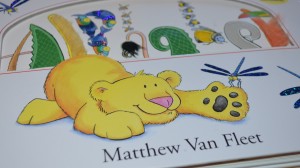 Alphabet by Matthew Van Fleet has been our go-to alphabet book.
Alphabet by Matthew Van Fleet has been our go-to alphabet book.
At almost every one of our sessions, my student has touched, lifted flaps and pulled the tabs of this cheerful and engaging alphabet book and accompanying (pop up) poster. Whether feeling the alligator’s scaly tail or the yak’s shaggy head, this is a book that children love to explore through touch.
Phonemic awareness is also supported as the author effectively uses alliteration, ‘Wet waddling Warthogs,’ rhyming and onomatopoeia, ‘Furry Lions roar, Whiskered Mice squeak, Hungry newborn Nightingales – cheep, cheep, cheep!‘ while introducing a variety of animals. Older children will notice that extra details have been added to the illustrations but not the text. Termed, Safari Sightings, these animals and plants are illustrated and listed in an afternote.
Alphabet won the following
2008 National Parenting Publications Gold Award
Parenting Favorite Book of the Month, April 2008
Top Ten Children’s Books of 2008, Time.com
A New York Times Children’s Bestseller (2008)
I can’t tell you how many times we have solved this Ravensburger See Inside Puzzle together. My young student happily turns the puzzle upside down, and together we turn all the puzzle pieces over. We chat as we start with the corners and work towards the middle of the puzzle. There are so many ways to enrich a child’s vocabulary, understanding and problem solving as we talk about the puzzle pieces and their attributes while noticing the plants, insects, animals, birds and structures featured in the puzzle itself.
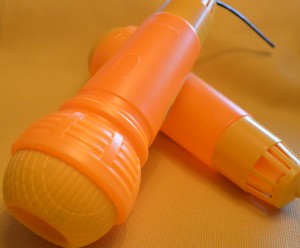 Rather than focusing on the enunciation of specific sounds or words, I want to encourage playing with sound and making a variety of sounds. It is amazing how an inexpensive plastic toy ‘Echo’ microphone can encourage a child to sing, make sound effects and speak. I pick up an Echo Mic and put the other one on the table. Before long, we are both singing The Alphabet Song or The Wheels on the Bus or Happy Birthday. I hate to think what we sound like but progress is progress and the plastic ‘Echo” microphone has helped us along the way.
Rather than focusing on the enunciation of specific sounds or words, I want to encourage playing with sound and making a variety of sounds. It is amazing how an inexpensive plastic toy ‘Echo’ microphone can encourage a child to sing, make sound effects and speak. I pick up an Echo Mic and put the other one on the table. Before long, we are both singing The Alphabet Song or The Wheels on the Bus or Happy Birthday. I hate to think what we sound like but progress is progress and the plastic ‘Echo” microphone has helped us along the way.
Download Song Sheets
 The Wheels on the Bus
The Wheels on the Bus
Free printable lyrics for The Wheels on the Bus
 The Alphabet Song
The Alphabet Song
Free printable lyrics for The Alphabet Song
10″ Echo Mic (Colors may vary) at Amazon.com
Magic Mic Novelty Toy Echo Microphone-Pack of 2 at Amazon.ca
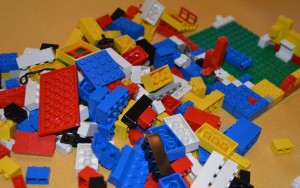 As we work toward improved verbal communication, I want to ensure that my student has a rich listening or receptive vocabulary as well as a large speaking or expressive vocabulary so I want to provide him with repeated meaningful encounters with words. I want him to hear and know colors, numbers, positional words (over, under, beside, inside) and nouns (windows, doors, wheels, roof, trees, flowers, bricks, fences, house, car, truck, steering wheel). Of course, I turn to my favourite toy. Each day I arrive with a bucket of Lego . We build houses and towers, we look for small bricks and blue bricks and yellow, white, red, and black bricks. We add windows and doors, stairs and roofs. And I talk about everything we do. I chat constantly and now he chimes in.
As we work toward improved verbal communication, I want to ensure that my student has a rich listening or receptive vocabulary as well as a large speaking or expressive vocabulary so I want to provide him with repeated meaningful encounters with words. I want him to hear and know colors, numbers, positional words (over, under, beside, inside) and nouns (windows, doors, wheels, roof, trees, flowers, bricks, fences, house, car, truck, steering wheel). Of course, I turn to my favourite toy. Each day I arrive with a bucket of Lego . We build houses and towers, we look for small bricks and blue bricks and yellow, white, red, and black bricks. We add windows and doors, stairs and roofs. And I talk about everything we do. I chat constantly and now he chimes in.
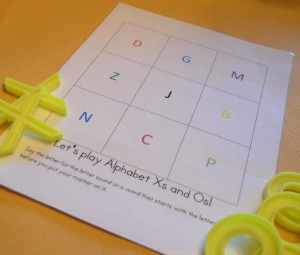 From the start, we have played Tic Tac Toe. I made a laminated game board (that includes a letter of the alphabet in each square) and I use Xs and Os from a dollar store game. When we first played, his job was to say, “Your turn,” after he played his “O.” Now, he says the letter name in the box and a word that begins with the letter, “C is for Cat.” He also says, “Your turn, ” and “I win!” He has never tired of this simple game. When we first started, he said very little. Now, it is a constant exchange of short sentences and the joy of communicating about a shared activity.
From the start, we have played Tic Tac Toe. I made a laminated game board (that includes a letter of the alphabet in each square) and I use Xs and Os from a dollar store game. When we first played, his job was to say, “Your turn,” after he played his “O.” Now, he says the letter name in the box and a word that begins with the letter, “C is for Cat.” He also says, “Your turn, ” and “I win!” He has never tired of this simple game. When we first started, he said very little. Now, it is a constant exchange of short sentences and the joy of communicating about a shared activity.
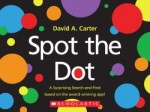 Spot the Dot created by David A. Carter
Spot the Dot created by David A. Carter
Novelty book published by Cartwheel Books, an Imprint of Scholastic
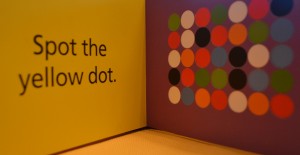
Spot the Dot is an appealing, brightly colored, interactive pop up book that includes flaps to lift, a wheel to turn and tabs to pull. Visual clues and predictable text encourage children – even those with delayed speech – to venture into ‘reading.’ My student thoroughly enjoys this book and now points to the words as he ‘reads’ each page and then pretends to ‘search’ for the dot.


